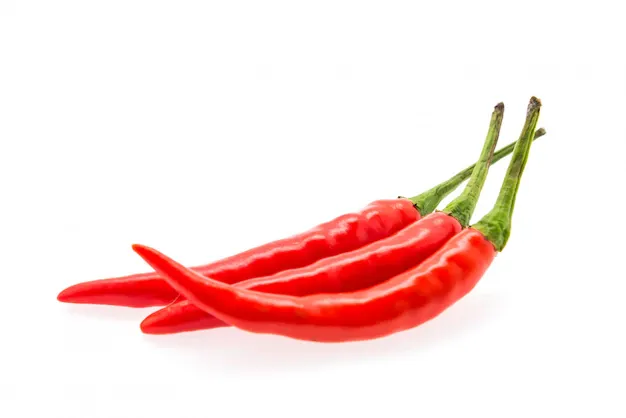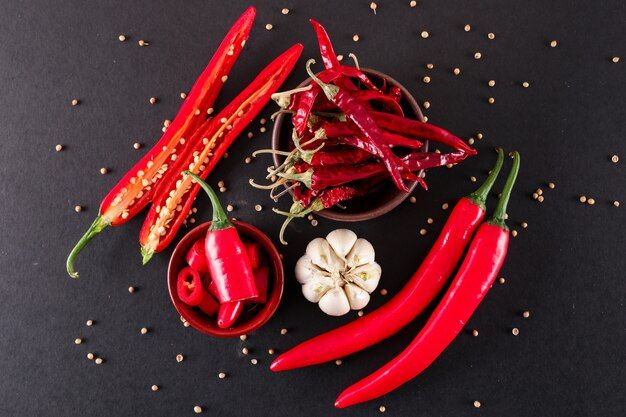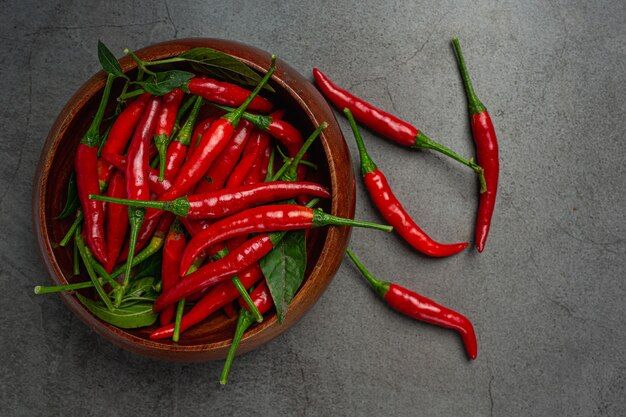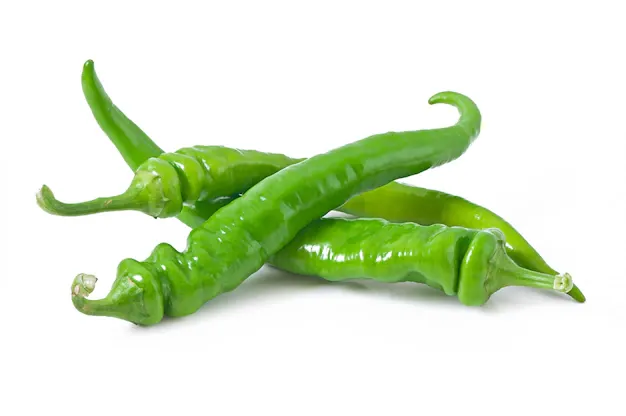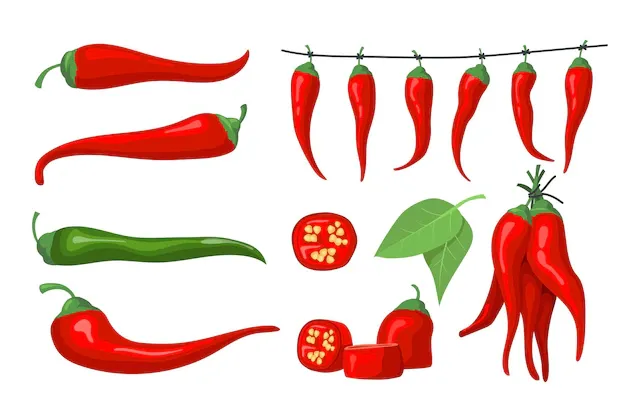Chili peppers, also known as hot peppers, are not only a staple in various cuisines worldwide but are also grown for their numerous health benefits. With their fiery taste and incredible versatility, chili peppers can be found in everything from sauces and soups to stir-fries and salads. This blog will explore the method of cultivating chili peppers, delve into the vital vitamins they contain, and examine the unique eating properties that make chili peppers both beneficial and exciting to eat.
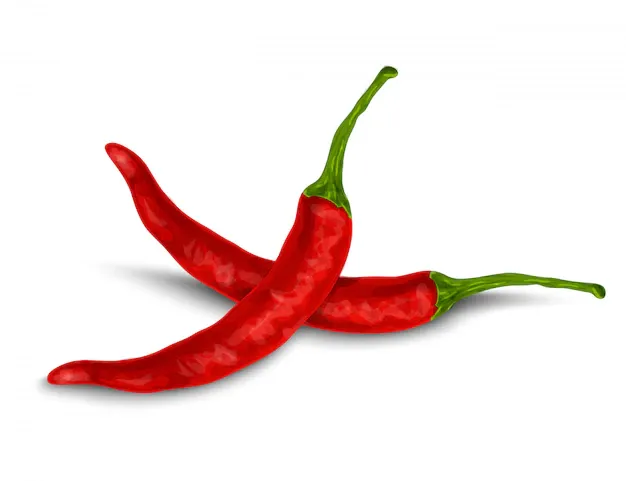
Chili Cultivation Method
Chili peppers, which belong to the Capsicum genus, are typically grown in warm climates, with conditions favoring sun and heat. While they are native to Central and South America, chili peppers are now grown in almost every part of the world, from the United States and Europe to India and Africa. Whether you’re a professional farmer or a hobbyist gardener, understanding the right cultivation method is key to successfully growing healthy chili peppers.
1. Climate and Temperature Requirements
Chili peppers thrive in warm, sunny climates. The optimal temperature for growing chili peppers ranges between 70°F (21°C) and 85°F (29°C) during the day, and nighttime temperatures should not drop below 60°F (15°C). Frost can severely damage chili plants, so it's crucial to ensure they are planted after the last frost date in your region.
2. Soil Preparation
Chili peppers require well-drained soil that is rich in organic matter. A loamy soil with a pH level between 6.0 and 7.0 is ideal. Before planting, it is a good idea to enrich the soil with compost or well-rotted manure to provide nutrients and improve the soil’s drainage properties. If your soil tends to be heavy or clayey, adding sand or perlite can improve drainage.
3. Choosing the Right Variety
There are countless varieties of chili peppers, each varying in flavor, size, heat intensity, and color. Some popular types include:
Cayenne: Known for its spiciness, typically used in powder form.
Jalapeño: Mild to moderate heat, commonly used in salads and salsas.
Habanero: Small but extremely hot peppers, often used in spicy dishes.
Bird’s Eye: Tiny but fiery hot peppers used in Asian cuisine.
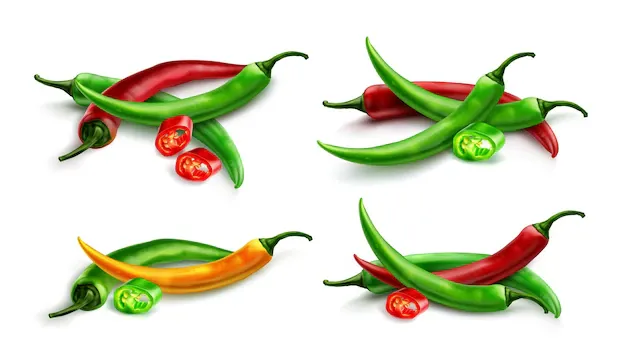
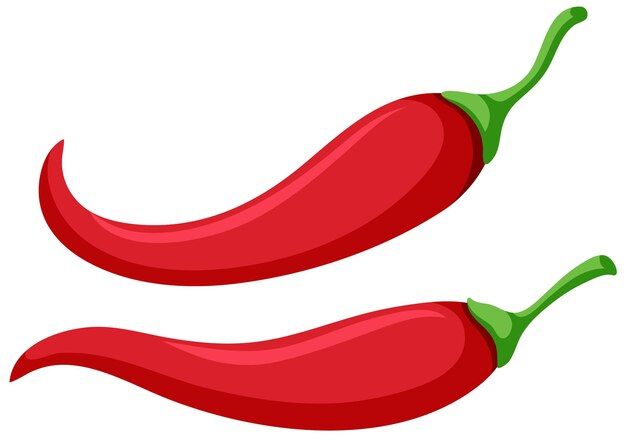
Bell Peppers: Although not spicy, bell peppers belong to the same Capsicum family.
When selecting a variety to grow, consider your taste preferences, climate, and intended use for the chili peppers. For instance, hot varieties like habaneros and bird's eye peppers might require more care, while milder varieties like bell peppers are easier to manage.
4. Planting and Spacing
Start by planting chili seeds indoors 6–8 weeks before the last expected frost. Use seed trays or small pots with good drainage, and fill them with a light seed-starting mix. Ensure the seeds are planted at a depth of about 0.25 inches (6 mm). After sowing, cover the pots with a plastic dome or plastic wrap to maintain humidity, and place them in a warm area with indirect sunlight.
Once the seedlings have grown strong and the outdoor temperatures are warm enough, they can be transplanted outdoors. Space the plants about 18–24 inches apart in rows, with 30–36 inches between the rows to allow the chili plants enough room to spread and grow.
5. Watering and Fertilizing
Chili plants require consistent moisture but do not do well in waterlogged soil. Water the plants deeply once or twice a week, depending on the weather and soil moisture. Make sure the soil remains moist but not soggy. During the growing season, it is also essential to fertilize the plants. Use a balanced fertilizer (such as 10-10-10), but be cautious not to over-fertilize, as this can lead to excessive leaf growth at the expense of fruit production.
6. Pruning and Maintenance
To encourage the growth of strong chili plants, regular pruning is essential. Pinch off the top of the plant when it reaches about 6 inches tall to stimulate bushier growth and better fruit production. Remove dead or damaged leaves regularly to keep the plant healthy. Some chili varieties may require staking or caging to keep the plants upright, especially those that bear larger fruits.
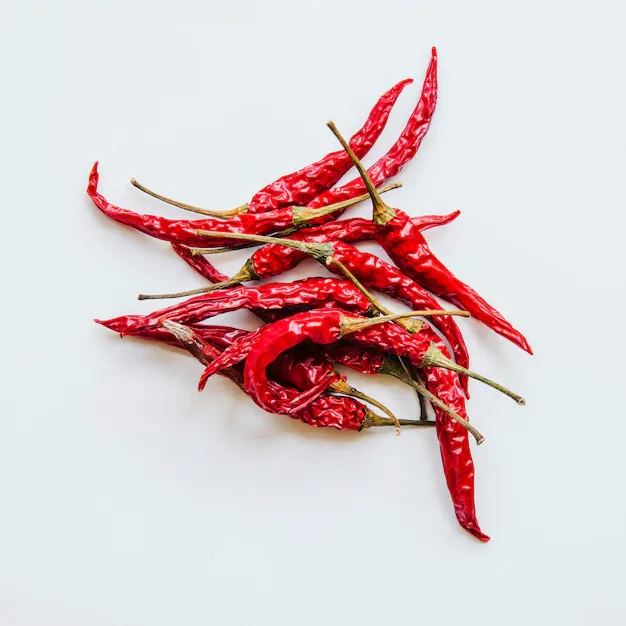
7. Harvesting and Storing Chili Peppers
Chili peppers can be harvested when they have reached their mature color (red, yellow, or orange, depending on the variety) and have a firm texture. Use scissors or pruning shears to cut the peppers off the plant, leaving a small part of the stem attached. If you wish to store chili peppers, they can be dried in the sun, oven, or dehydrator. Alternatively, they can be frozen or canned for long-term storage.
Vitamins and Nutrients in Chili Peppers
Chili peppers are not only known for their spicy heat but also for their impressive nutritional profile. They contain a wide variety of vitamins and minerals that contribute to health and well-being. Let’s take a closer look at the key vitamins and nutrients found in chili peppers:
1. Vitamin C
One of the most notable vitamins in chili peppers is Vitamin C. Chili peppers are packed with this essential nutrient, which plays a vital role in supporting the immune system, promoting wound healing, and enhancing skin health. In fact, a single chili pepper can contain more than 100% of the daily recommended intake of Vitamin C.
Vitamin C also acts as a powerful antioxidant, protecting the body from oxidative stress and free radicals. This vitamin can also improve the absorption of iron from plant-based foods, making chili peppers an excellent addition to vegetarian and vegan diets.
2. Vitamin A
Chili peppers are a great source of Vitamin A, which is essential for maintaining healthy vision, skin, and immune function. The orange and red colors of chili peppers come from carotenoids, particularly beta-carotene, which the body converts into Vitamin A. Vitamin A also plays a role in cell growth and differentiation, making it vital for proper bodily function.
3. Vitamin B6 (Pyridoxine)
Chili peppers are a good source of Vitamin B6, which is important for proper brain development and function. This vitamin also helps the body convert food into energy and supports the production of neurotransmitters like serotonin and norepinephrine. Adequate intake of Vitamin B6 can help improve mood, reduce the risk of chronic diseases, and support overall cognitive function.
4. Vitamin K
Although chili peppers are not a significant source of Vitamin K, they do contain small amounts of this vitamin, which is essential for proper blood clotting and bone health. Vitamin K also plays a role in regulating calcium in the bones and blood vessels.

5. Capsaicin
The compound responsible for the spicy heat of chili peppers is capsaicin. Beyond adding heat to foods, capsaicin has been shown to have numerous health benefits. It has anti-inflammatory properties, may help with pain relief, and even aids in weight loss by boosting metabolism and promoting fat burning.
Eating Properties of Chili Peppers
Chili peppers have long been prized not only for their intense heat but also for their unique flavor profiles, which can add depth and complexity to various dishes. Eating chili peppers can be an exciting culinary experience, but they also come with some health benefits that go beyond just taste.
1. Spiciness and Heat
The most obvious eating property of chili peppers is their heat. This sensation comes from the capsaicin molecule, which binds to pain receptors in the mouth and triggers a burning feeling. The heat of chili peppers is measured in Scoville Heat Units (SHU), which range from mild varieties (like bell peppers) with 0 SHU to extremely hot varieties (like the Carolina Reaper) that can reach over 2 million SHU.
Despite the pain they cause, many people enjoy the heat, as it can stimulate the release of endorphins, the body’s natural “feel-good” chemicals. This is why some people find eating spicy foods so addictive.
2. Health Benefits of Eating Chili Peppers
Metabolism Boost: Chili peppers can increase metabolic rate and help burn fat more efficiently. The heat generated by capsaicin can cause the body to expend more energy, making chili peppers a natural aid for weight management.
Pain Relief: Capsaicin is also used topically in creams and patches to relieve pain caused by conditions like arthritis, muscle pain, and nerve damage. Eating chili peppers may have a similar effect by promoting the release of endorphins, which can help dull pain.
Digestive Health: Contrary to popular belief, chili peppers do not cause ulcers. In fact, capsaicin can promote the production of gastric juices, aiding digestion. It also has antimicrobial properties, which can help protect the digestive system from harmful bacteria.
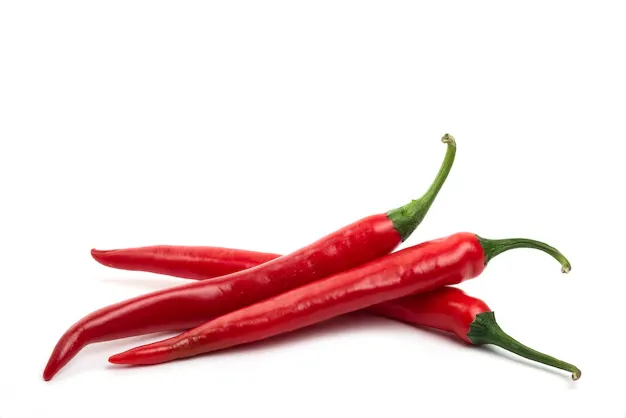
Improved Cardiovascular Health: The consumption of chili peppers has been linked to better heart health by improving circulation, lowering blood pressure, and reducing the risk of heart disease. Capsaicin is thought to help regulate cholesterol levels, contributing to overall cardiovascular well-being.
3. Versatility in Cooking
Chili peppers are extremely versatile in the kitchen. They can be eaten fresh, dried, or powdered, and they’re often used in sauces, marinades, salsas, curries, and stews. Their flavor can range from sweet and fruity to intensely hot, and they can add a wonderful balance of heat and flavor to dishes. Whether in a spicy stir-fry, a tangy salsa, or a smoky chili powder rub, chili peppers are sure to enhance any meal.
Chili peppers are a remarkable addition to the culinary world. Not only do they provide a unique flavor and intense heat, but they are also packed with essential vitamins, including Vitamin C, Vitamin A, and Vitamin B6. They offer a variety of health benefits, including boosting metabolism, promoting digestive health, and aiding in pain relief.
The cultivation of chili peppers is relatively simple, though it requires the right climate, soil conditions, and care to produce healthy plants. Whether you are an experienced grower or a beginner, with the right conditions and proper care, you can enjoy a bountiful harvest of chili peppers to spice up your dishes.
Farm Channel video credit
So next time you reach for a chili pepper in your garden or kitchen, remember that it's more than just a fiery ingredient—it's a powerhouse of nutrients with a host of health benefits. Whether you're cultivating them yourself or simply enjoying them in your meals, chili peppers are a spicy treat that delivers both flavor and nutrition.
